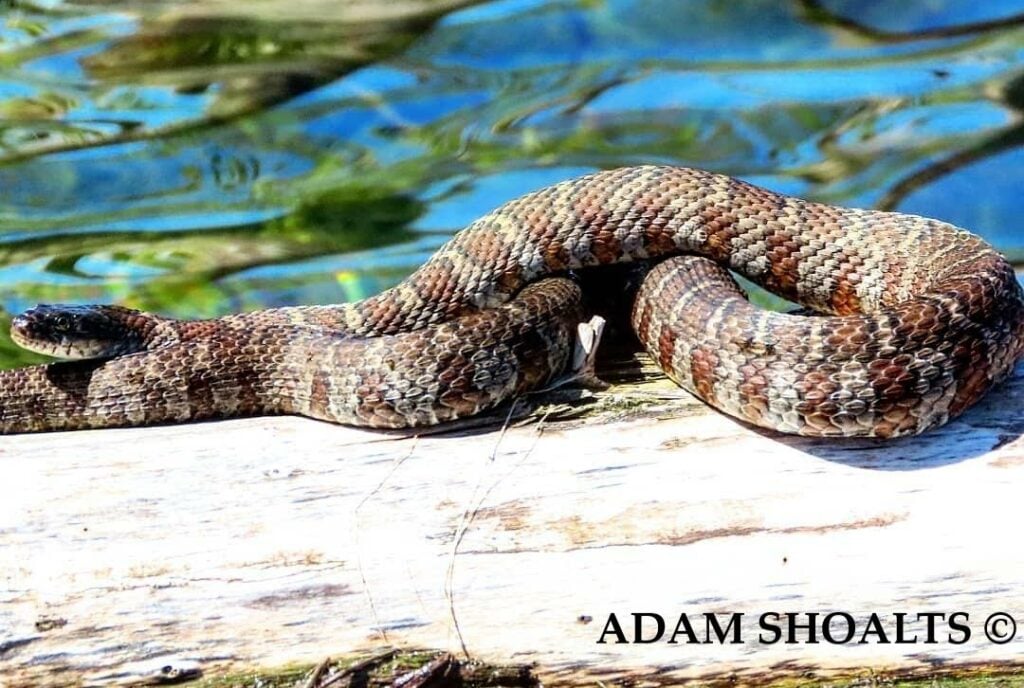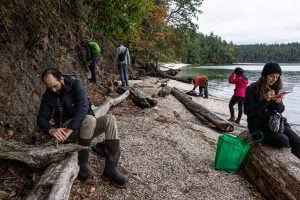
Places
Snakes on a plain: Manitoba’s Narcisse Snake Dens
Each spring, a disquieting tangle of tens of thousands of gartersnakes emerges from their winter home, forming the world’s largest gathering of snakes
- 4126 words
- 17 minutes
People & Culture
The best-selling author and explorer has already found nine of the 25 snakes, will he find the remaining 16?

Tangled in bushes, high in the trees and buried between boulders, Westaway Explorer-in-Residence Adam Shoalts will go wherever it takes to find and photograph all of Canada’s native snake species in the wild.
The Great Canadian Snake Quest follows Shoalt’s Quest for the Blue Racer, a project that took place in 2018 in conjunction with the Royal Canadian Geographical Society to try and find the elusive blue racer, one of Ontario’s largest snakes. After successfully finding the species on Pelee Island, Ont., Shoalts decided to take his quest further and document all of Canada’s snakes.

As a professional, modern-day explorer, national best-selling author, and Fellow of the RCGS, Shoalts has completed several expeditions, including a monumental 4,000 kilometre journey across Canada’s remote Arctic, a three-month solo canoe journey from southern Canada to the Arctic and immersed himself in the dark corners of Canada’s wild while exploring the ancient mountains of Labrador. Needless to say, Shoalts is no stranger to adventure.
During these expeditions, encountering snakes was a regular occurrence, so finding all 25 of Canada’s native snakes felt like a natural thing to do. Shoalts says that everyone needs a bucket list and his, at the moment, is to find snakes.
Other than finding and photographing all of the snakes in the wild, the goal of the project is to raise awareness about the threats that snakes face in Canada and provide educational resources to classrooms across the country.
There is no estimated end date as Shoalts juggles other expeditions, adventures and book projects. So far, he has found nine of the 25 native snake species. Will he find the remaining 16 snakes?

I’ve always been interested in wildlife of all kinds. My first published writing focused on eastern cougars, and my new book, Where the Falcon Flies, is about a canoe journey I did following birds from southern Canada to the Arctic. But some years ago, I thought how it’s interesting that compared to such iconic animals as beavers, moose, and polar bears, Canada’s reptiles don’t receive much attention. Yet Canada is home to at least 25 different species of native snakes. This includes everything from colourful milk snakes to giant tree-dwelling gray rat snakes to elusive desert night snakes. Many of our snakes are endangered or threatened, so focusing on them now also feels timely.
Besides fulfilling my personal goal of seeing all of Canada’s snakes in the wild, I hope the project will raise awareness about Canada’s often overlooked snakes and the threats they face. I’m particularly hoping that my project sparks some interest among students and young people and maybe inspire them to learn more about Canada’s reptiles and what we can do to help them. To that end, we’ve created a website on Canada’s different snakes and the threats they’re facing. I’m also doing some virtual presentations for schools.

So far, I’ve had a relatively easy time with the nine different species I’ve already found and photographed in the wild. I’d thought finding an endangered blue racer (the second largest snake native to Canada) would be tough, since they’re aren’t many left in the wild in Canada. But surprisingly enough, I found one on only my second day looking. That said, things are definitely going to get harder as I shift to rarer, more elusive species, several of which are seldom encountered, such as the queen snake and desert night snake.

It may have been a summer job I had once as a teenager working for Ontario’s Ministry of Natural Resources. I was lucky enough to get to work on some eastern Massasauga rattlesnake field studies. Before that, I’d seen and caught many garter snakes and even the odd milk snake, but that was my first introduction to Canada’s other snake species, and it sparked my interest to learn more.
Snakes may be underappreciated, but they’re actually vital to healthy ecosystems. Among other things, they help keep rodent populations in check, as well as other species. Many snakes, in turn, are prey for larger predators. So they’re an integral part of the wild, and it’s unfortunate their populations, much like other reptiles and amphibians, have, in many cases, declined dramatically. Plus, the overwhelming majority of snakes are not harmful to humans and not at all aggressive.
Probably the desert night snake. They’re nocturnal, which makes spotting one difficult, and they’re only found in a small area of British Columbia, and even then, not often.

My plan was to start with my local snakes and work my way out from there. I’m lucky that I happen to live in an excellent snake area with about 10 species in the woods right near my place. But since many species are only found in western Canada (such as prairie rattlesnakes, bull snakes, and desert night snakes), I’ll have to eventually venture farther afield.

Habitat loss. The overwhelming majority of Canada’s snakes only live in southern Canada, which also happens to be where the vast majority of people live too. That means there has already been a lot of habitat loss, as wetlands, forests, and grasslands have been converted into highways, farms, shopping malls, houses, cities, etc. Development pressures are also only growing more intense. I regularly see forests in southern Ontario getting cleared for more development. Every time that happens, wild habitat shrinks — not only for reptiles but other wildlife, too. Many snake species don’t do well in fragmented habitats and need large wetlands or mature forests to thrive. Snakes are also often killed crossing roads and highways, and with our roads getting ever busier, mortality rates increase.
Kind of like ice cream, I’d probably have a different answer every month. There are so many different ones it’s hard to pick a favourite. In terms of looks, milk snakes are hard to beat: they have a very striking, colourful pattern. But I also love paddling in my canoe miles from land on some lake and seeing a big northern water snake swimming across the water. Blue racers have a special fascination to me, too, as do smooth green snakes because of their vivid colour and small size. I also like eastern hognose snakes since they look a bit like a cobra (but are harmless), and of course, the black rat snake (also called the gray rat snake) is pretty awesome: they get over eight feet long and live in trees.

Just getting to see such a diverse range of snakes in the wild across Canada is incredible enough. But as a byproduct, I’ve also enjoyed the opportunity to look for snakes, which has led me to get out in nature, explore places I likely wouldn’t have ventured otherwise, and meet all sorts of interesting people who’ve generously offered to help me. That, along with finding the snakes, has been a very rewarding experience.
Are you passionate about Canadian geography?
You can support Canadian Geographic in 3 ways:

Places
Each spring, a disquieting tangle of tens of thousands of gartersnakes emerges from their winter home, forming the world’s largest gathering of snakes

Environment
The planet is in the midst of drastic biodiversity loss that some experts think may be the next great species die-off. How did we get here and what can be done about it?

People & Culture
Naming leads to knowing, which leads to understanding. Residents of a small British Columbia island take to the forests and beaches to connect with their nonhuman neighbours

Wildlife
Wildlife photographers on the thrill of the chase — and the importance of setting ethical guidelines